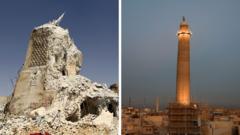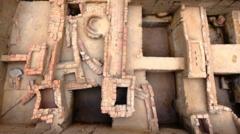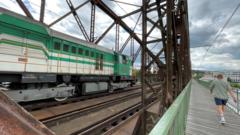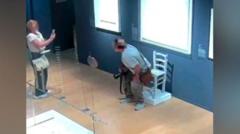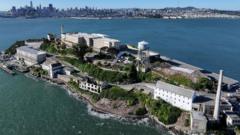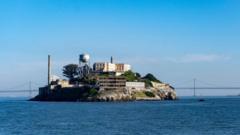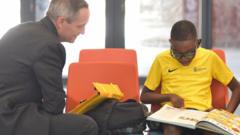Historic landmarks in Mosul, Iraq, are undergoing significant restoration after years of destruction wrought by the Islamic State (IS) group. The revitalization project, spearheaded by Unesco, initiated just a year after IS was defeated in 2017, marks a new chapter for the city known for its rich tapestry of multicultural coexistence.
On Wednesday, a ceremony celebrating the reopening of these landmarks will be attended by Unesco's director-general, Audrey Azoulay, as well as local artisans, residents of diverse faiths, and community representatives. The reopening comes as a relief to a city that once thrived on tolerance and shared history, only to be torn apart by IS occupation from 2014-2017.
During IS’s grip on Mosul, the group targeted many minority communities, enforcing a brutal ideology that caused untold suffering. The city saw its iconic structures, including the celebrated leaning al-Hadba minaret, heavily damaged or destroyed. After a protracted battle to liberate the Old City, Mosul emerged a shadow of its former self, with a staggering 80% of the area ravaged.
Photographer Ali al-Baroodi recalls his visit to Mosul post-liberation; he was met with a scene of devastation, with the al-Hadba minaret lie in ruins, turning the vibrant city into what felt like a "ghost town." He described the scene as shocking and deeply sorrowful, transforming the skyline into a grim reminder of the chaos.
The comprehensive restoration effort was launched with a budget of $115 million, primarily contributed by the European Union and the United Arab Emirates. Community trust, emphasizing collaboration across various religious and ethnic groups, has been a focal point of the rebuilding initiative. Father Olivier Poquillon, a Dominican priest involved in the restoration of the convent al-Saa'a, highlights that fostering trust is as crucial as restoring physical structures.
Chief architect Maria Rita Acetoso has directed the intricate process of reconstruction, which has included the restoration of 124 historic homes and several significant buildings. She asserts that cultural restoration can empower communities, creating jobs and instilling pride. The initiative has already led to training for over 1,300 local youths in traditional skills and has generated around 6,000 new jobs.
The revival extends beyond physical renovations. Major structures like the al-Tahera Church and al-Nuri mosque have been restored, with al-Tahera’s bells ringing out once more. Residents who have long called the Old City home are returning to their properties, infusing the area with life and hope. Mustafa, a resident whose home was built in 1864, expressed elation upon returning to a rebuilt home.
Despite the ongoing scars of conflict, the restoration of Mosul’s landmarks signifies a communal healing process and a promising glimpse into the future. As Ali al-Baroodi remarks, witnessing the rebirth of the city feels akin to seeing a once-dead figure revived, showcasing the enduring spirit and resilience of its people.

